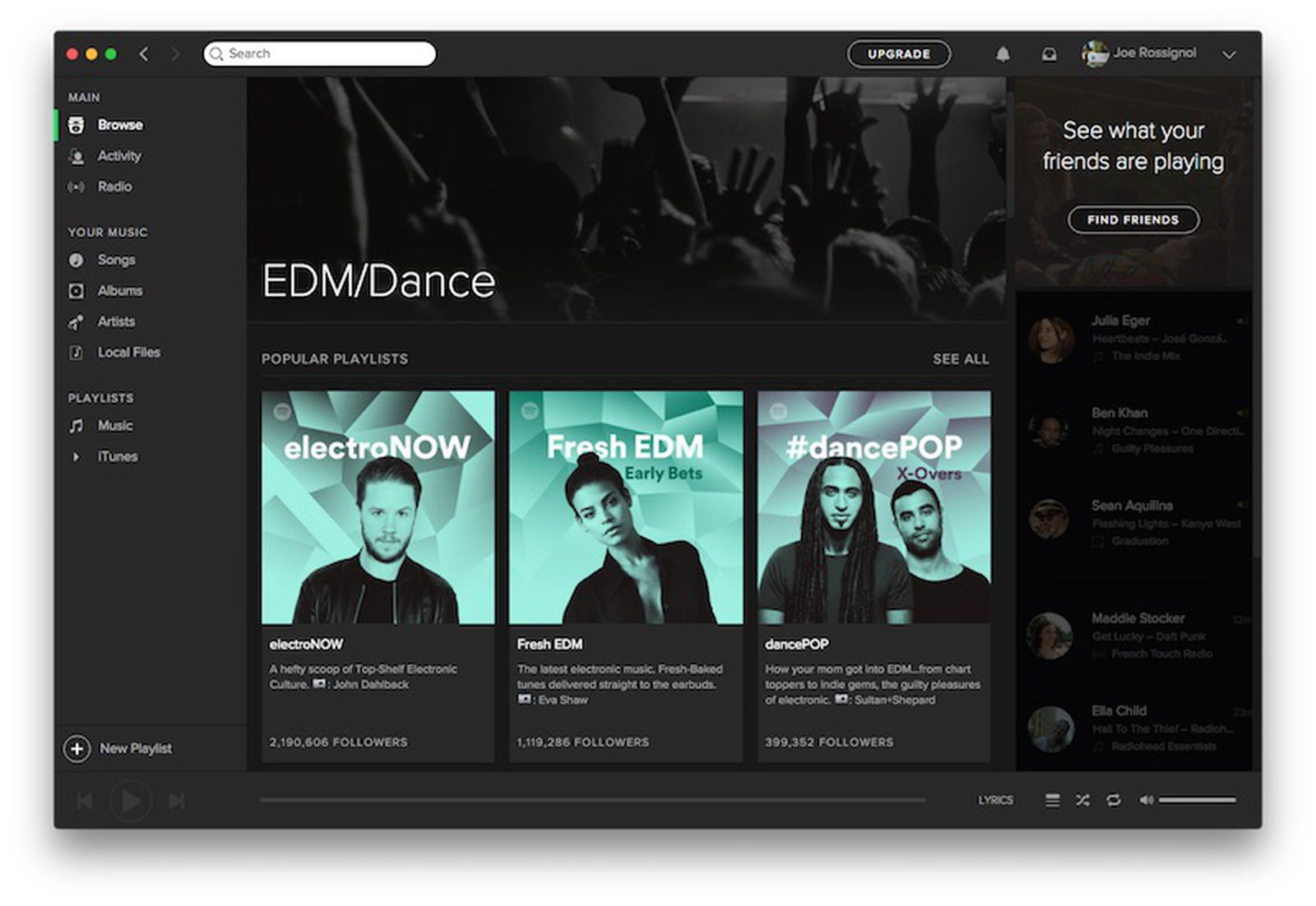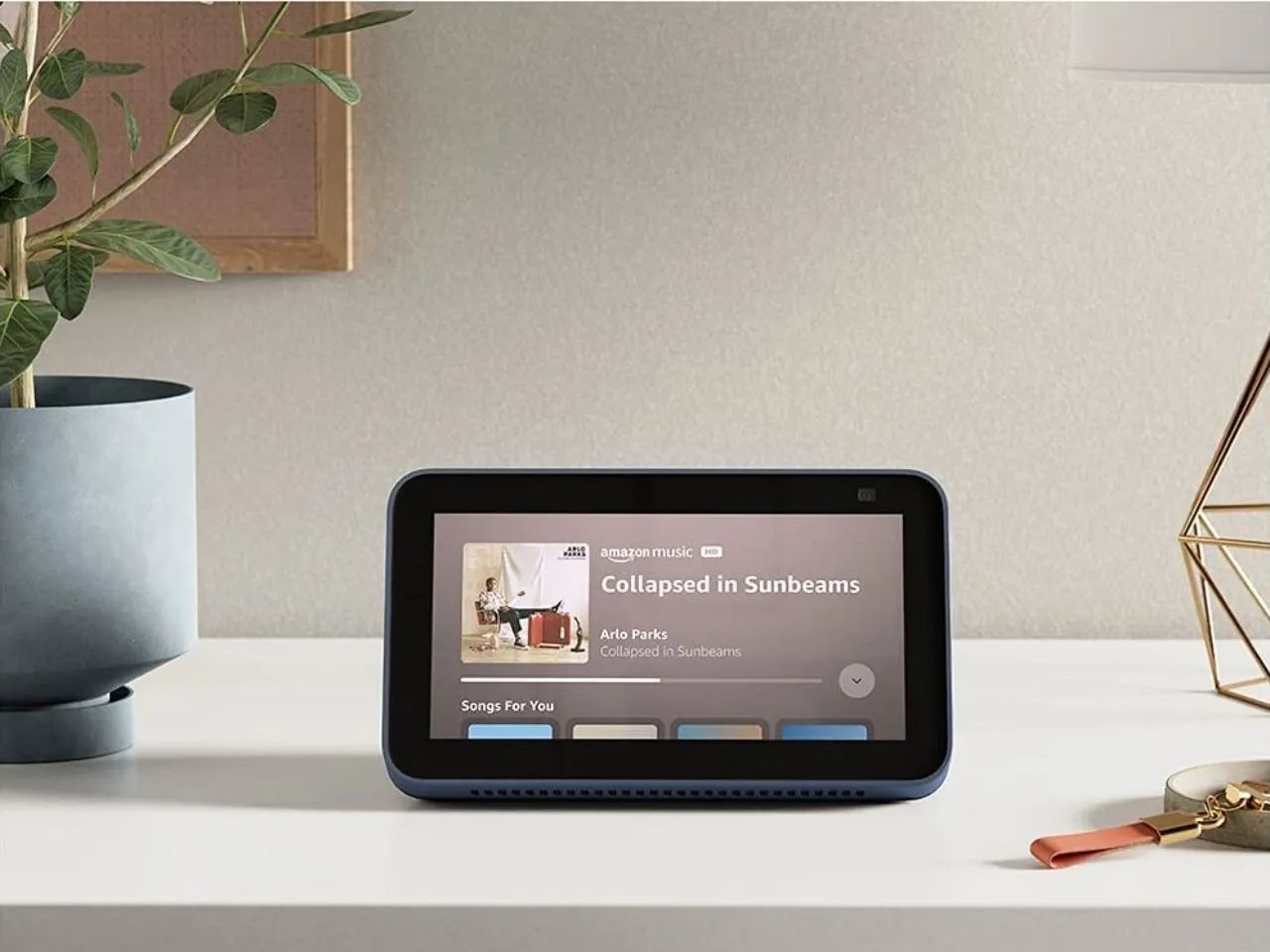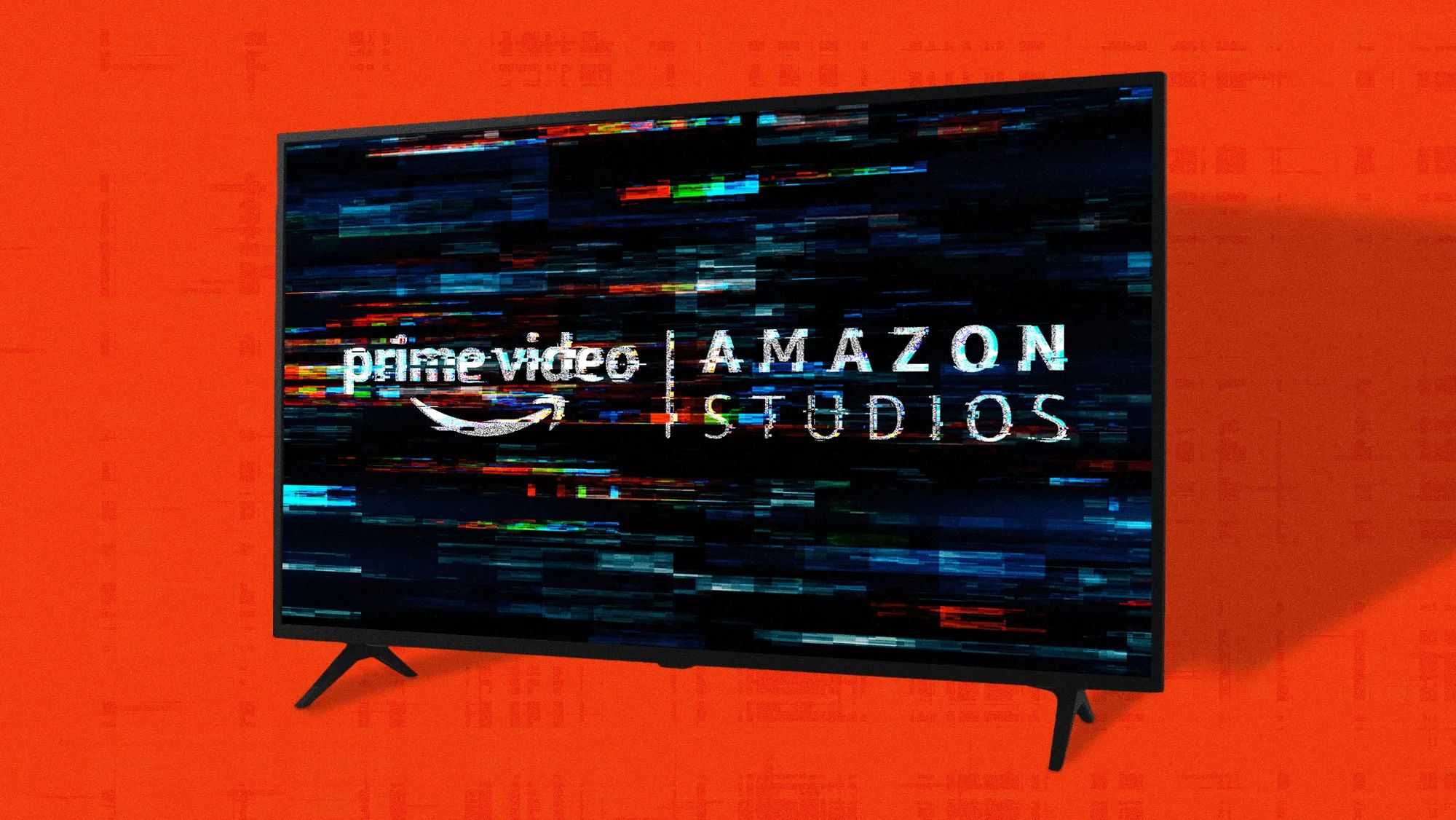Introduction
Welcome to the world of music streaming, where countless platforms compete for your attention. One of the main players in this arena is Amazon Music, which has steadily gained popularity since its launch. With a large library of songs, personalized recommendations, and convenient features, it quickly became a favorite among music enthusiasts. However, over time, users have noticed some changes in the Amazon Music app that have left them wondering: What happened to the Amazon Music app?
Amazon Music initially made waves in the music streaming industry by offering access to millions of songs for a monthly subscription fee. It quickly gained traction, attracting music lovers with its extensive catalog, competitive pricing, and seamless integration with other Amazon products. Users enjoyed the convenience of being able to stream music on their devices and sync their playlists across multiple platforms.
The Amazon Music app gained a loyal following due to its user-friendly interface and personalized recommendations. It used algorithms to analyze users’ listening habits and suggest similar songs and playlists tailored to their tastes. This customization feature was highly appreciated, as it helped users discover new music that resonated with their preferences.
For a while, the Amazon Music app seemed to be hitting all the right notes. However, in recent months, users have started noticing changes that have resulted in mixed feelings. Some users appreciate the updates, while others are left feeling frustrated and confused.
In the following sections, we will explore the recent changes and updates to the Amazon Music app, hear what users are saying, and examine the competition in the music streaming industry. Let’s dive in and uncover the mystery behind the question: What happened to the Amazon Music app?
The Rise of Amazon Music
Amazon Music made its debut in 2007 as a digital music store, allowing customers to purchase and download individual songs or albums. In 2011, Amazon introduced Amazon Prime Music, offering a limited selection of music to Prime members as part of their subscription. However, it wasn’t until the launch of Amazon Music Unlimited in 2016 that the platform truly made its mark in the music streaming industry.
With Amazon Music Unlimited, Amazon aimed to compete with other established streaming services like Spotify and Apple Music. They expanded their library exponentially, offering over 70 million songs for streaming on-demand. They also introduced exclusive features like hands-free listening on Alexa-enabled devices and a discounted subscription for Prime members.
Amazon’s strong foothold in the e-commerce industry played a significant role in the success of Amazon Music. They leveraged their existing customer base and integrated the music streaming service with other Amazon products like the Amazon Echo smart speaker, creating a seamless ecosystem for users. This integration further boosted the popularity of Amazon Music.
Despite being a latecomer to the music streaming scene, Amazon Music quickly gained traction due to its vast selection of songs, competitive pricing, and user-friendly interface. It became an attractive option, particularly for Amazon Prime members who already enjoyed the benefits of free two-day shipping and access to various other Amazon services. Amazon Music’s success proved that they could compete against more established platforms in the industry.
As Amazon Music continued to evolve, they introduced curated playlists, personalized recommendations, and exclusive content from popular artists. These additions transformed the platform into a personalized music discovery tool for users, further enhancing the user experience. Amazon Music’s constant innovation and commitment to enhancing the listening experience have contributed to its rise in popularity.
Now that we understand how Amazon Music carved a niche for itself in the streaming industry, let’s delve into the recent changes and updates to the Amazon Music app.
The Amazon Music App
The Amazon Music app, available on mobile devices and desktop, was designed to provide users with a seamless and enjoyable music streaming experience. From its intuitive interface to its extensive features, the app aimed to cater to the needs and preferences of music lovers.
Upon launching the app, users are greeted with a clean and visually appealing layout. The homepage showcases personalized recommendations based on their listening habits, making it easy for users to discover new music that aligns with their tastes. The search function allows users to find specific songs, albums, or artists quickly.
One of the standout features of the Amazon Music app is the ability to create and customize playlists. Users can curate their own collection of favorite songs, organize them into playlists, and even share them with friends. The app also offers pre-made playlists and radio stations catering to different genres and moods, providing users with a wide range of options to explore.
The Amazon Music app also integrates seamlessly with Alexa, Amazon’s virtual assistant. Users can control their music hands-free using voice commands, whether it’s playing a specific song, skipping tracks, or adjusting the volume. This integration enhances the convenience and accessibility of the app, especially for those who own Alexa-enabled devices.
Another notable feature of the Amazon Music app is its offline playback capability. Users can download their favorite songs, albums, or playlists to their devices and listen to them even without an internet connection. This feature is particularly useful when traveling or in areas with limited connectivity, ensuring that users can enjoy their music on the go.
In terms of user experience, the Amazon Music app generally receives positive feedback. Users appreciate the smooth navigation, fast loading times, and reliable performance. The app’s user interface is intuitive and straightforward, reducing the learning curve for new users. However, recent updates and changes have introduced some mixed reactions from users.
Now that we have explored the features of the Amazon Music app, let’s move on to the recent changes and updates that have left users wondering about its current state.
The Recent Changes
Like any digital platform, the Amazon Music app has undergone various updates and changes over time. While some of these changes were well-received by users, others have sparked confusion and dissatisfaction.
One notable change is the revamped user interface. Amazon Music introduced a new design that aimed to enhance the visual appeal and improve navigation. However, this change proved to be divisive among users. Some welcomed the fresh look and found it easier to navigate, while others complained about the unfamiliar layout and difficulty in finding their favorite features.
In addition to the user interface, Amazon Music has made adjustments to its recommendation algorithm. Previously, users praised the app for its accurate and customized recommendations. However, with recent updates, some users have noticed a decline in the relevancy of the suggested content. Complaints range from receiving recommendations that don’t align with their music preferences to repetitive suggestions.
Furthermore, there have been changes to the pricing and subscription plans for Amazon Music. In an effort to cater to different user needs, Amazon introduced different tiers of subscription options. While this provides more flexibility, it has also led to confusion and frustration for some users who struggle to understand the differences between the various plans and which plan best suits their needs.
Another change that has garnered attention is the integration of podcasts into the Amazon Music app. This expansion into the podcasting realm was a strategic move to compete with platforms like Spotify and Apple Podcasts. While many users appreciate the addition of podcasts and find it convenient to have all their audio content in one place, others feel that it distracts from the core music streaming experience and would prefer a separate app for podcasts.
Despite the mixed reactions to these recent changes, it’s important to note that updates and improvements are necessary for any digital service to stay competitive and relevant. However, it’s equally important for companies to consider user feedback and find a balance between innovation and meeting user expectations.
Now that we’ve examined the recent changes to the Amazon Music app, let’s hear what users are saying about their experiences and opinions.
What Users are Saying
As with any app or service, the Amazon Music app has received a wide range of feedback from its users. Let’s take a look at what users are saying about their experiences with the app.
Positive reviews highlight the app’s extensive music library and ease of use. Many users appreciate the vast selection of songs available for streaming, noting that they can find almost any song they’re looking for. The app’s user-friendly interface and intuitive navigation are also praised, with users finding it easy to search for songs, create playlists, and discover new music.
Users have also expressed admiration for the personalized recommendations provided by the app. They appreciate that the app considers their listening preferences and suggests songs and playlists tailored to their tastes. This feature has introduced users to new artists and genres they may not have discovered otherwise.
On the other hand, negative reviews point out various issues users have encountered with the app. Some users have reported technical glitches, such as songs not playing correctly, playlists not syncing across devices, or the app crashing unexpectedly. These issues can be frustrating, as they disrupt the seamless music streaming experience.
Additionally, there are concerns about the accuracy of the recommendation algorithm. Some users have noticed that the app suggests songs that do not align with their preferences or that the recommendations become repetitive. This has led to disappointment as the personalized recommendation feature was initially one of the app’s strong points.
Another area where users have expressed frustration is the recent changes to the user interface. While some users have adapted to the new design and find it visually appealing, others find it confusing and have difficulty locating certain features. Some users have also noted that the app feels cluttered, especially with the addition of podcast content.
Furthermore, users have shared their confusion regarding the different subscription plans and pricing options. Many have struggled to understand which plan best suits their needs and have found the information provided by Amazon to be unclear. This lack of transparency can be off-putting and cause frustration among users.
Overall, user opinions are mixed when it comes to the Amazon Music app. While many users appreciate its extensive library, personalized recommendations, and ease of use, others have experienced technical issues, dissatisfaction with the changes to the user interface, and confusion over subscription plans. The feedback provided by users showcases the importance of addressing these concerns and finding ways to improve the app’s overall user experience.
Now, let’s shift our focus to the competition and how it stacks up against other music streaming platforms.
The Competition
The music streaming industry is highly competitive, with several platforms vying for users’ attention and subscription dollars. Let’s take a closer look at how the Amazon Music app compares to its competitors.
One of the main rivals of the Amazon Music app is Spotify. Known for its vast music library, personalized playlists, and user-friendly interface, Spotify has garnered a large and loyal user base. It offers both a free ad-supported version and a premium subscription option, giving users the flexibility to choose their preferred listening experience. Spotify’s focus on social sharing and collaborative playlists has also made it a popular choice among music lovers.
Apple Music, another major player in the industry, boasts a strong integration with Apple devices and seamless synchronization with iTunes libraries. Apple’s emphasis on exclusive content, music documentaries, and live radio stations sets it apart from its competitors. With a visually appealing interface and curated playlists, Apple Music appeals to users looking for a sleek and cohesive music streaming experience.
In recent years, YouTube Music has gained traction as a prominent competitor. Leveraging its vast collection of music videos and the power of YouTube’s recommendation algorithm, YouTube Music offers personalized playlists and a seamless transition between audio and video content. Users also have the option to access YouTube Music for free with ads or upgrade to a premium ad-free version.
Another notable contender is Tidal, which stands out for its emphasis on high-fidelity audio quality and exclusive artist collaborations. Tidal appeals to audiophiles who prioritize superior sound and appreciate the platform’s commitment to supporting artists. While Tidal has a smaller user base compared to other streaming services, its dedication to delivering top-notch audio has earned it a dedicated following.
Each of these platforms brings its unique features and strengths to the table, catering to different user preferences and needs. Amazon Music, with its integration into the wider Amazon ecosystem and the convenience of hands-free listening through Alexa, offers a compelling choice for those already immersed in the Amazon ecosystem.
However, in terms of user experience, the Amazon Music app still has room for improvement to compete with its rivals. Addressing user concerns about technical glitches, refining the recommendation algorithm for more accurate and diverse suggestions, and simplifying the subscription options could help solidify its position in the highly competitive music streaming landscape.
By keeping a close eye on the competition, taking user feedback into account, and continuing to innovate, the Amazon Music app has the potential to carve out its own unique space in the music streaming industry.
Now, let’s wrap up and summarize our findings about the Amazon Music app.
Conclusion
The Amazon Music app, with its extensive music library, personalized recommendations, and integration with the Amazon ecosystem, has made a significant impact in the music streaming industry. From its early days as a digital music store to the launch of Amazon Music Unlimited, the platform has steadily gained popularity among music enthusiasts.
While the app has seen recent changes and updates, user feedback has been mixed. Some users appreciate the revamped user interface, personalized recommendations, and integration of podcasts. Others, however, have expressed concerns about technical glitches, the accuracy of the recommendation algorithm, and confusion over pricing and subscription plans.
Amidst stiff competition from platforms like Spotify, Apple Music, YouTube Music, and Tidal, the Amazon Music app has solidified its position by leveraging its integration into the wider Amazon ecosystem and offering convenient features like hands-free listening through Alexa. However, addressing user concerns and refining the overall user experience will be crucial to maintaining its competitive edge.
As the music streaming industry continues to evolve, it is crucial for Amazon Music to strike a balance between innovation and meeting user expectations. By listening to user feedback, addressing technical issues, and further enhancing the personalized recommendation system, the Amazon Music app can continue to attract and satisfy music lovers around the world.
Whether Amazon Music will rise to the occasion and address the concerns raised by users remains to be seen. As the landscape of music streaming continues to evolve, users will ultimately decide which platform best suits their needs and preferences.
In conclusion, the Amazon Music app has made significant strides in the music streaming industry, but it must continue to adapt and improve to stay ahead of its competitors and provide an exceptional music streaming experience for its users.

























